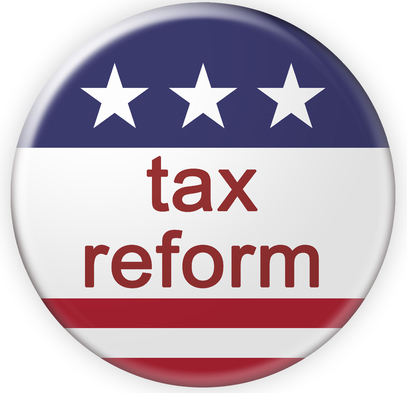 Recently, the While House started soliciting input on tax reform to revive the American Innovation Culture. I believe that the U.S. is in a technological crisis and, therefore, I am providing the following suggestions as measures for reviving the American innovation culture in an effort to spur debate.
Recently, the While House started soliciting input on tax reform to revive the American Innovation Culture. I believe that the U.S. is in a technological crisis and, therefore, I am providing the following suggestions as measures for reviving the American innovation culture in an effort to spur debate.
The seriousness of this crisis is reflected in patent numbers held by U.S. inventors, the poor composition of inventions, lost ecosystem for patent transactions, vanishing venture funding for patents, a trend of rapidly reducing patent-backed start-ups, crippled basic research activities, lost market values of patents, lack of a vibrant patent licensing market, and high abandonment rate for patents.
Based upon my review of the patent system performance going back to the more than half a century, I found that giving patent rewards by an exclusive right is no longer a viable incentive. My conclusion is based upon the increasing litigation costs and the values of inventions that would be realized. Abundant case stories tend to support my view.
I found that the U.S. patent promise of exclusivity has become nothing more than lip service with no credibility for more than half a century. The stories of Thomas Edison’s experience revealed the high costs and court’s bias in enforcing patent. Edison, the world’s greatest inventor, had about 1.000 patents; but the president of Edison, Inc., once stated that Edison had spent more money in obtaining patents and then fighting in their support than he had ever received from his patents. This fact provides a good measure of patent rewards in the real world. Edison said that nine of ten times, inventors were mistreated in court while pirates and thieves tried to avoid liabilities.
With all his great inventions, Edison died with little money left. Similarly, Edward Wreston, after obtaining about 300 patents, practically stopped inventing. There is overwhelming evidence showing that patent rewards are not commensurate with their merits. Now, patent rewards achieved by litigation are meaningless. A patent owner can easily spend millions in a case to enforce patent rights. In a majority of patent infringement cases, awarded damages are not enough to cover litigation expenses.
The Government has turned patenting into a business for generating revenues. The Patent Office runs its business like a taxing house from which it generated $410 million for 2010 to 2014 for non-agency use. The total surplus fund has reached about a total of some $1 billion since 1992. Inventors are required to pay all kinds of fees and charges even if they are necessitated by endless, unjustified, and frivolous rejections. The U.S. patent system runs its business by inducing inventors to invent with a promise of giving patent reward, getting inventor’s money as revenues to run other businesses, publishing inventions for the public with half an intention to issue a patent, refusing to enforce patent rights for any reasons, and expecting patent owners to return exclusive rights back. The Patent Office has levied excessive money while inventors could not get meaningful rewards.
The government on one hand uses laws to make patents unenforceable, and at the same time charges excessive maintenance fees for little services provided. Such a combination forces patent owners to voluntarily “return” their p
atents to the government. However, the government can never give the inventions back. After their patents are returned, the underlying inventions appear in society or used as building blocks in later inventions. Eventually fewer and fewer people will fall prey to such a patent scam.
The Government is responsible for creating this anti-patent climate. The Supreme Court in eBay made injunctive relief nearly impossible to obtain. A fair market value for a patent cannot be determined because there is no incentive to negotiate and no penalty for stealing. It is then impossible to prove the amounts of damages. By crippling injunctive relief, the government practically encourages theft of patent rights.
Then, the government enacted the America Invents Act (AIA), which authorizes the Patent Trial and Appeal Board (PTAB) to help patent thieves harass patent owners. Then, the government further changes a venue rule. The new venue rules force patent owners to file cases in the headquarters location of the infringer, which drives costs much higher for inventors. The government is responsible for fostering and intensifying a culture where stealing and infringing patents has become acceptable.
A patent system maintained by offering lip service must fail over time. The American inventor population is vanishing rapidly as a result of the changed laws and anti-patent movement. If the patent reward fails, both those who are inventors and those who would be inventors will be influenced not to pursue innovating and society will see an era of slow progress. Bad policy advice has misled Congress into belief that inventing without the participation of inventors will be fine. Reality will soon prove it was a fatal mistake that the U.S. should not have made.
Steven Chu, the Physics Nobel Laureate who was also the US Energy Secretary had warned as early as 2010:
When it comes to innovation, Americans don’t take a back seat to anyone—and we certainly won’t start now,” said Secretary Chu. “From wind power to nuclear reactors to high speed rail, China and other countries are moving aggressively to capture the lead. Given that challenge, and given the enormous economic opportunities in clean energy, it’s time for America to do what we do best: innovate. As President Obama has said, we should not, cannot, and will not play for second place.
Seven years later in 2017, China has eclipsed the U.S. by building the first Quantum Communication Network. The U.S. has to settle for “second place” or perhaps worse.
The U.S. now needs to consider how to undo the damages caused by the series of unwise actions in the last half a century. Now, there is no simple method to restore public trust in the patent system. It is impossible to convince the three hundred million people in America that the constitutional promise of patent rewards can be trusted. However, tax credits for patent owners would be taken as something real for the first time, and we know that individuals and businesses of every size respond to shifts in tax policy.
Therefore, the White House and the Congress should consider tax credits for all fees paid to the Patent Office. Such tax credits should cover all patents including those abandoned, denied, and invalidated. All attorneys fees paid toward obtaining a patent or for a patent transaction should also be made tax deductible, which would put individuals on equal footing with corporations.
Only tax reform that includes both tax credits and tax deductions can induce inventors to stay in the field because it is the only thing that can help them get immediate relief. Giving exclusive rights lip-service will not work for current inventors and future inventors. However, tax credits and tax deductions will NOT fix the root problem of inadequate patent rewards.

![[IPWatchdog Logo]](https://ipwatchdog.com/wp-content/themes/IPWatchdog%20-%202023/assets/images/temp/logo-small@2x.png)

![[Advertisement]](https://ipwatchdog.com/wp-content/uploads/2024/03/IP-Copilot-Apr-16-2024-sidebar-700x500-scaled-1.jpeg)
![[Advertisement]](https://ipwatchdog.com/wp-content/uploads/2024/04/Patent-Litigation-Masters-2024-sidebar-early-bird-ends-Apr-21-last-chance-700x500-1.jpg)

![[Advertisement]](https://ipwatchdog.com/wp-content/uploads/2021/12/WEBINAR-336-x-280-px.png)
![[Advertisement]](https://ipwatchdog.com/wp-content/uploads/2021/12/2021-Patent-Practice-on-Demand-recorded-Feb-2021-336-x-280.jpg)
![[Advertisement]](https://ipwatchdog.com/wp-content/uploads/2021/12/Ad-4-The-Invent-Patent-System™.png)







Join the Discussion
3 comments so far.
Benny
October 19, 2017 05:46 am“There is overwhelming evidence showing that patent rewards are not commensurate with their merits”
You could use the same argument against hoarding an arsenal of ICBMs. You don’t buy them with the intention of creating global destruction – their value lies in dissuading the other side from using their ICBMs. The value of a patents lies in staving off mutual wasteful litigation. (It doesn’t always work out that way, but consider the alternatives)
Joaquín Machado
October 19, 2017 12:40 amBrilliant!
Don Debelak
October 18, 2017 05:25 pmPatents have for generations only given you the right to sue. And patents have always had the debate over interpreting what exactly each individual patent covers. A patent doesn’t really clarify this issue. Another major issue has always been that the patent office does not have much information about prior art that has not entered the patent realm. So patents have never been an iron-clad document. And while they haven’t really been subject to having a patent overturned,many patent holders have not been able to collect from infringers when a court decides their patent has not been infringed.
We need to move in the direction of iron-clad patents, where a patent really has merit. I don’t believe our current system provides those patents.
To improve the system a) we need a better mechanism for patent examiners to discover prior art that hasn’t entered the patent arena. As a former marketer of man products, we had many product tests where ran tests and didn’t start a patent process when the results were poor. We may have put out literature or exhibited the product taking advantage of the one year grace period under the prior first to invent system. b) we need to drop the some of the archaic language in the patent system where terms like whereby, whereas, wherein can all have different meanings. Patent explanation should be easier to understand. c) I believe patents should have to clearly explain what is different and unique about their invention. This can be murky and causes lots of issues later. i don’t like an old patent somehow be interpreted in a convoluted manner to become prior art for a new patent, when that patented did not list clearly that it was providing that benefit.
The PTAB process seems to have issues in that it is too easy to challenge a patent, and its standards overturning a patent too low. It should be overwhelming evidence. But I feel the key issue is we have not worked hard enough to create more iron-clad patents which requires the patent community to 1) produce patents that clearly outline what the innovation is, what it covers and 2) to uncover prior art that is outside of the patent arena.